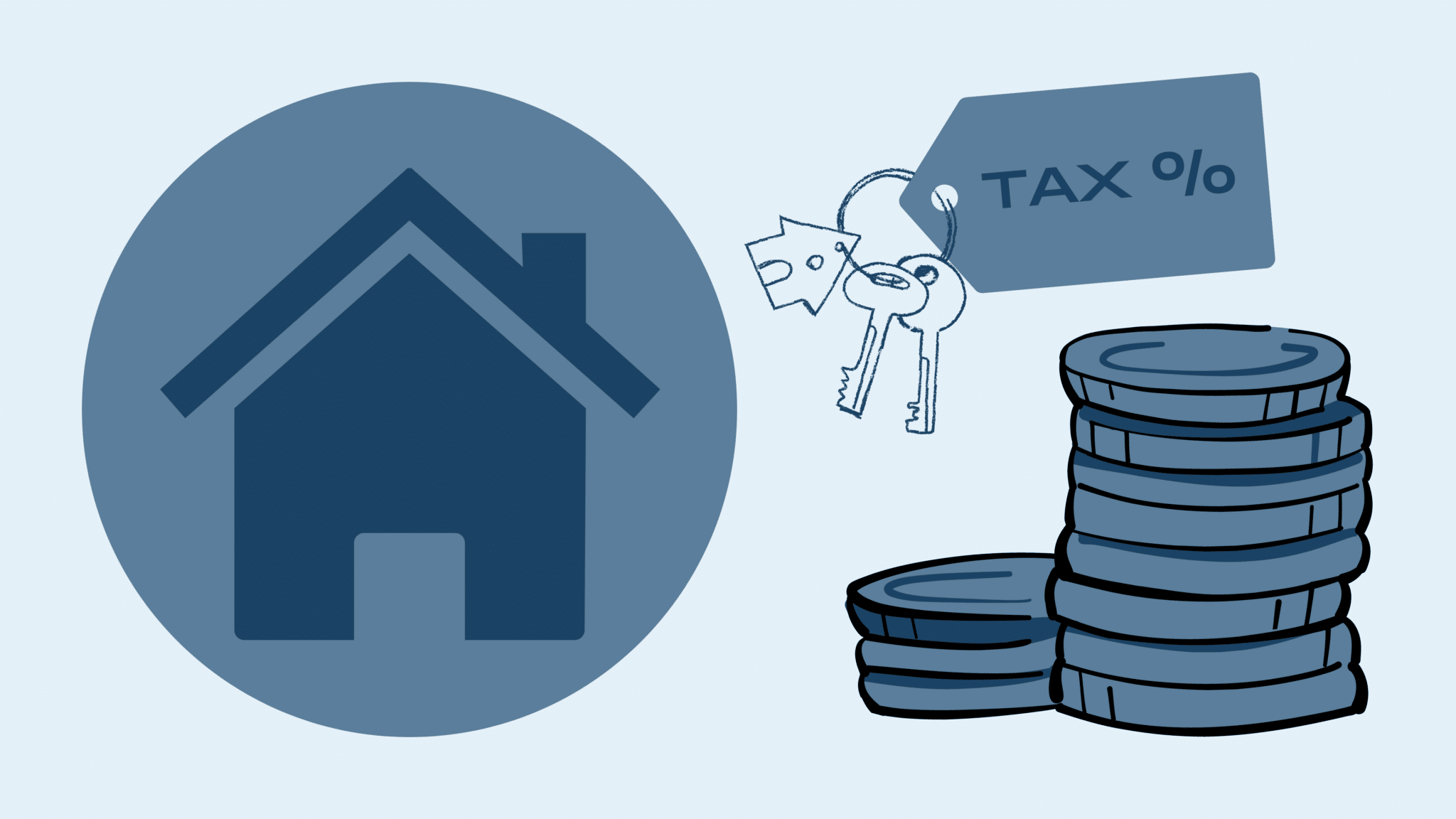Summary
The Danish Tax Authorities have just made an announcement regarding the determination of the basis for foreign property taxation for the income year 2022. It contains updated information on the sale of real estate in the individual countries, which can be used when calculating the basis for property value tax for foreign properties in 2022.
Indexes
The announcement concerns the Swedish index for holiday homes, index figures from the OECD and Statistics Denmark’s price index for summer houses. In addition, new rounding rules apply according to the Property Valuation Act.
Distance percentage
The announcement futher declares that the distance percentage is based on this year’s announcement on index figures etc. However, the distance percentage for 2001 and 2002 still needs to be adjusted, which is why it continues to appear. In addition, the Valuation Board has approved a British index, which must be used for properties located in Great Britain from and including the income year 2024.
Introduction
According to Section 2 of the Property Value Tax Act, persons resident in Denmark pay property value tax on owner-occupied homes (including holiday homes) located in Denmark or abroad, including the Faroe Islands and Greenland. The property value tax for foreign properties is charged at the same percentage as the property value tax for Danish properties. On the other hand, special rules apply to the calculation of the calculation basis for property value tax for foreign properties.
SKAT’s announcement SKM2008.565.SKAT (text in Danish) contains guidelines for how the calculation basis for property value tax must be determined. The guidelines correspond to the rules adopted by Act No. 1340 of 19 December 2008, which changed the calculation basis for property value tax for foreign properties with effect from and including the income year 2009.
The announcement contains updated information on the property value tax base for 2022. It concerns the Swedish index for holiday homes, index figures from the OECD and Statistics Denmark’s price index. The distance percentage is no longer regulated. With effect from and including the income year 2024, the Valuation Board has also approved a British index, which must be used to find the calculation basis for properties located in Great Britain.
The property value tax base
Foreign properties must be taxed in line with Danish properties, which are taxed on the basis of the lowest of the following three values, namely either:
The property value employed for the property in question in the year before the income year (i.e. the property assessment for 2020 for properties assessed in even years and 2021 for properties assessed in odd years is the tax base for 2022),
Property value per January 1st 2001 with an addition of 5 per cent, or
the property value per January 1st, 2002.
The taxation base for property value tax according to no. 1 has, according to the previously applicable rules, been the property value determined per October 1st in the income year. With Act No. 1580 of December 27th 2019, simultaneity has been introduced for the taxation bases for land debt and property value tax from and including January 1st 2020. The basis for calculation is therefore the property value in the previous income year.
For properties that, according to Section 5 of the Property Valuation Act, are assessed in even years, it will be the assessment per January 1st 2020, which forms the basis for property value tax in 2022. For other properties assessed as of March 1st 2021 according to Section 5 of the Property Valuation Act, it will be this valuation that forms the basis for property value tax in 2022. Refer to the legal guidance, section H.A.3.1.1 (text in Danish) for the valuation dates for owner-occupied homes and other properties respectively.
For foreign properties, it is the same way as the market value per 1 January in the previous income year, see Section 4 b, subsection of the Property Valuation Act. 2, no. 1. Similar to what applies to Danish properties, for foreign properties it will be the trading price per the assessment term that would apply if the properties had been located in Denmark.
Foreign assessment of Property
Since there is no Danish property valuation for foreign properties, the starting point is that if there is a public property valuation in the relevant foreign country which can be equated with a Danish valuation, the property value tax can be calculated according to the same rules that apply to Danish properties. However, it is a prerequisite for this that the Valuation Agency has approved the foreign assessment. At present, the Valuation Agency has only approved the public Swedish assessment in 2001 and 2002 of properties acquired before the 1st of January 2002. The Swedish assessment must, however, be corrected, cf. SKM2008.565.SKAT (text in Danish), section J 1), no. 5.
Acquisition price indexation
When there is no approved foreign valuation, the actual acquisition price of the property must be used instead.
Indexing to 2001 with an addition of 5 per cent. and 2002: This acquisition price will then have to be indexed back from the year of acquisition to 2001 or 2002 respectively. This will arrive at the property’s market value in the relevant income year.
The indexing must be done for properties acquired on January 1st 2002 or later.
Determination of the trade value per January 1st in the year before the income year: The indexes below indicate the price development compared to the same time the year before.
The OECD index figure for, e.g., 2021 indicates the price development from April 1st 2021 to April 1st 2022.
In order to achieve the same price level as for Danish properties that are taxed by the assessment from the previous income year, it is therefore necessary to index the trade price to the price level per the assessment term used for taxation of corresponding Danish properties.
For a property acquired in, e.g., 2022, this means that it must be indexed back using the index number for 2019 for taxation in the income year 2022. For a property acquired in, e.g., 2015, this must be indexed forward using the index number for 2019 for taxation in the income year 2022.
Is a property assessed per March 1st 2021, and, therefore; taxed in 2022 by the assessment per March 1st 2021, however, the indexation must take place at this price level. For a property acquired in 2022, this means that it must be indexed back using the index number for 2020 for taxation in 2022. For a property acquired in, for example, 2015, this must be indexed forward using the index number for 2020 for taxation in 2022.
The actual purchase price of the property is indexed respectively forward or backward to the specified time according to the following order of priority:
- An approved foreign price index
- The OECD’s index for developments in house prices
- The Danish summer house index
The Assessment Agency (formerly SKAT) has approved the use of an index for Swedish holiday homes and an index from the OECD.
See the entire index from 2001 – 2022 here (text in Danish)
See the entire index from 2001 – 2022 here (text in Danish)
*The index figure for 2021 for the Netherlands was stated in the announcement for 2021 (SKM2022.320.VURDST (text in Danish)) as 200.4, corresponding to the average of the first three quarters of 2021. The figure for 2021 has been corrected in this announcement so that the figures from the fourth quarter are included.
** The index figure for the Netherlands corresponds to the average of the first three quarters of 2022.
Index for Other countries
If the Assessment Agency has not approved an index from the OECD for the country in question, Statistics Denmark’s price index for summer houses in Denmark must be used:
2001-2010:
See the entire index from 2001 – 2022 here (text in Danish)
Get assistance
Do you need assistance with declaring foreign property in Denmark?
* By checking GDPR Consent, you agree to let us store the information you provided in our system. You can always contact us to permanently remove your data.
The distance percentage
Regulation of the indexed acquisition price (trade value): the distance percentage.
Since the property value tax for Danish properties is calculated on the basis of the public assessment (until now typically lower than the market value) the foreign calculated market values previously had to be further reduced by the so-called distance percentage, which expressed the difference between the market value and the public assessment. This made the foreign calculated trade values comparable to the Danish property values.
By Act No. 278 of April 17th 2018 (text in Danish), section 4 b, subsection of the Property Value Tax Act. 2, no. 1, amended so that there is no longer an adjustment with the distance percentage. The intention of the new property valuation system is that the Danish valuations, in the future, will reflect the market value. Therefore; therebe no need to regulate the market value of the foreign properties with the Danish distance percentage. The change has effect from and including the income year for which the calculation basis for the property value tax for a similar Danish property is calculated on the basis of the property value employed in accordance with §§ 5 or 6 of the Property Valuation Act (Ejendomsvurderingsloven, text in Danish).
For property value taxation in 2022, the assessment per January 1st 2020 and the assessment per March 1st 2021 will be used as the calculation basis for property value tax. Both assessments are carried out in accordance with Section 5 of the Property Assessment Act. Reference is made to the legal guide, section H.A.3.1.1 (text in Danish) for the assessment dates for owner-occupied homes and other properties, respectively. The market value according to Section 4 b, subsection of the Property Value Tax Act. 2, no. 1, must therefore not be regulated for the distance percentage in 2022.
The trading value per January 1st 2001 and as of January 1st 2002 according to section 4 b, subsection 2, nos. 2 and 3, shall, however; continue to be regulated with the distance percentage.
Rounding
For properties located in Denmark and valued according to Section 5 of the Property Valuation Act, the rules for rounding in Section 49 of the Property Valuation Act apply. In order for the taxation of foreign properties to be equated with the taxation of Danish properties, the same rounding rules apply for foreign properties.
The calculation basis for property value tax according to Section 4 b, subsection of the Property Value Tax Act. 2, no. 1, must then be rounded to the nearest DKK 1,000.00 in accordance with the rounding rules for Danish properties.
The regulated market value according to § 4 b, subsection 2, no. 2 and 3 (2001 plus 5 per cent and 2002), are rounded according to the established rounding rules according to the previously valid assessment act.
Property value tax is calculated as a starting point with 9.2‰ of the current year’s property value. For owner-occupied properties valued at more than DKK 3,040,000, an additional 20.8‰ in property value tax is calculated on the part of the property value that exceeds DKK 3,040,000.
Ordinarily, the Danish tax authorities can re-assess tax statements for the previous three (3) income years. As such, tax assessments for 2023can be reassessed ordinarily until May 1 2026.
In case of fraudulent assessments the Danish tax authorities are able to re-assess tax statements for the previous 10 years.
If a tax assessment is re-assessed and results in in a residual tax payment, this payment will be subject to interests and surcharges based on rates for the specific income year.
The scope covers all properties which can serve for occupation. This includes properties such as summer houses, occupational dwellings, apartments, etc.
In cases with joint ownership the corresponding property taxes are divided between the owners of the property.
The rules of property taxes do not apply to properties, which are sublet. If your property is sublet, however; the rental income is most likely subject to Danish taxation as well.
If you have paid property taxes in the country, where your property is located it is likely that you can get a credit in your Danish property value tax for your foreign property.
You can, however; not get credit for land registration fees and other taxes or charges in connection with the transfer and mortgage of the property.
Some examples of property taxes you can deduct:
Sweden: Property tax (of the part that the owner themselves use for housing)
Spain: El Impuesto sobre los Bienes Inmuebles (IBI) (of the part the owner themselves use for housing)
France: Taxe foncière sur les propriétés bâties and Taxe d´habitation (of the part the owner themselves use for housing)
Registration and calculation of property taxes are done in the online tax brief, E-tax (in Danish: “Skattemappen”), which can be assessed by all tax payers themselves.
The property must be registered with the Danish tax authorities as part of your tax return submission
Individuals who are fully liable to pay taxes to Denmark are taxable of their worldwide income.
Examples of types of income could be:
Rental income
Shares/dividend
Employment income from a non-Danish employer
Pensions or similar from a non-Danish payroll source
Interests or royalties
Capital gains from various investment instruments
The precautionary principle
If the market value is not calculated using the above indexes, but instead as an estimate of the market value, a precautionary principle applies, where the calculation basis is 80 per cent of the trading value. The purpose of the precautionary principle is for the always present uncertainty in an assessment should benefit the home owners by setting the tax base lower than the assessment itself.
The precautionary principle thus applies in the following situations:
- There is a foreign approved public assessment which can be equated with a Danish assessment, and this is approved by the Assessment Agency, cf. § 4 b, subsection 1
- There is other documentation that provides a more accurate determination of the trading value than indexation according to no. 1 and 2, cf. § 4 b, subsection 4, No. 3.
- The trading value is determined on the basis of estimates, because there is no index, other documentation, etc., cf. § 4 b, subsection 4, No. 4.
The precautionary principle also applies to taxation in 2022 for foreign properties.
The market value or the foreign approved public assessment must then be reduced to 80 per cent. to find the calculation basis.
The precautionary principle does not apply to trading values per 1 January 2001 with an addition of 5 per cent. or per 1 January 2002. These trading values must instead be adjusted for the distance percentage according to the above index.
Disclosing the trade value
The calculated trade value, calculated using the above rules, can be disclosed via “E-tax” (tast selv) or by using form 04.053.
The calculated trade value per January 1st 2021, January 1st 2002 and January 1st 2001 plus 5% are indicated in boxes 212, 213 and 214 respectively, after which the smallest value will be used as the basis for calculation.
The deadline for timely submission of the extended information form used by taxpayers with immovable property abroad is July 1st 2023.
Other approved foreign price indexes
In addition to the above approved indices, the Valuations Agency has also approved The UK House Price Index (HPI) from The Office for National Statistics for properties located in Great Britain.








